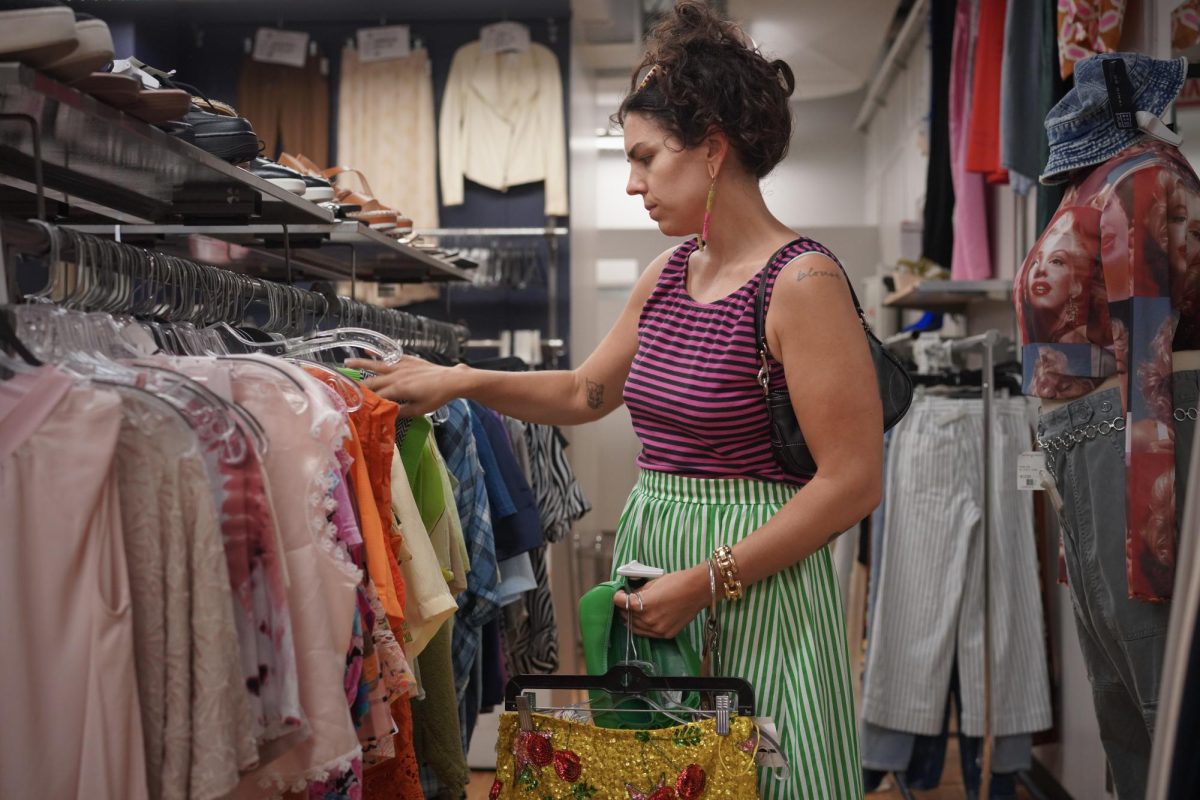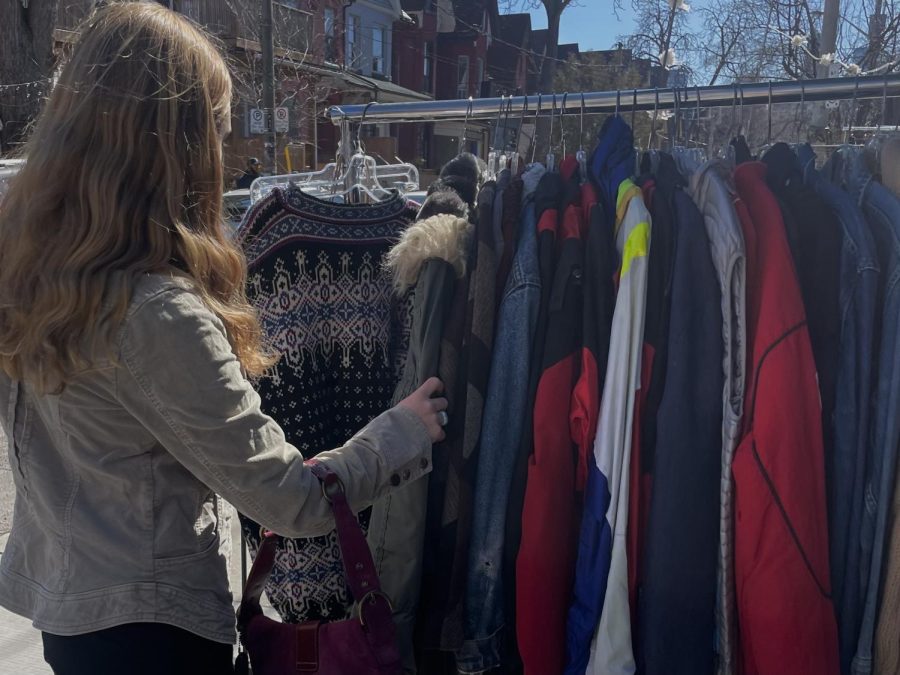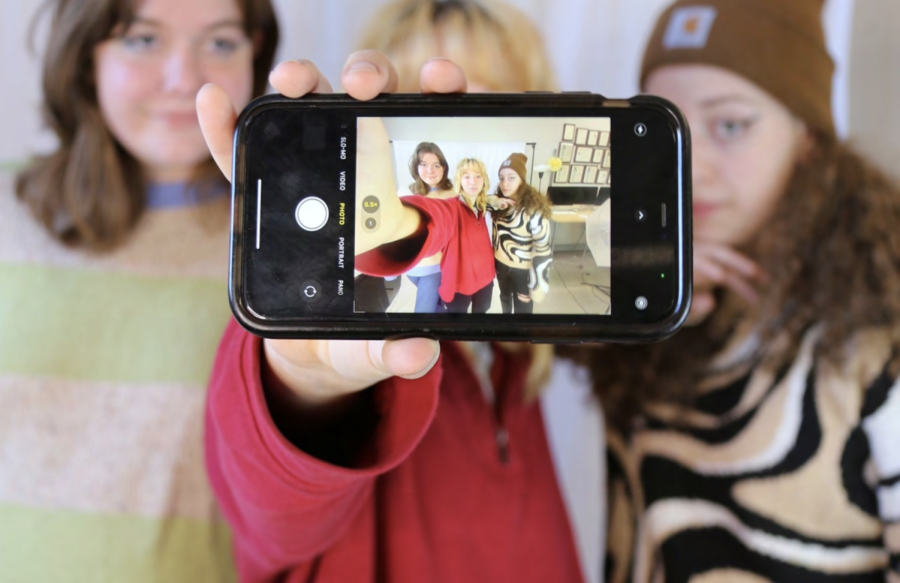
“I like your sweater… Where’d you get it?”
“It’s resale.”
Those dreaded words destroy the dreams of envious students as they seek to build similar wardrobes. The piece is bound to be unique, and finding another like it is nearly impossible. For high schoolers with hipster tendencies, finding unique clothes to satisfy their tastes and budgets can be tricky, and for many, pre-used clothing is the way to quench their craving for quirky clothing pieces.
Before the Industrial Revolution, manufacturing cloth was more expensive than the labor to make and repair clothing, so people mended and re-sized clothing. With proper alterations, clothes were worn longer and by more people. When factory production made cloth cheaper, people started throwing their clothes away if they tore or got too small. However, some donate their clothes to charity-run thrift shops or sell used clothes to consignment stores.
For teens wishing to discover covet-worthy secondhand finds that rival their fashion-crushes, there is still hope — Ann Arbor is full of used clothing treasure troves.
Mishka Repaska, a junior, gets clothes from the “Salvation Army, Value World’s really close to my house, [even the] lost and found [and]… ‘clothing swaps,’ [where] my friends and I get together and get the clothes that we don’t want anymore and put them in a giant pile in the middle of my house and just go through it and take what we want.”
Friends and family can be great sources for used clothes. Marta Piper, a freshman, has been wearing secondhand clothes since she was born. Most of her secondhand clothes originally belonged to her sisters, cousins, neighbor, or even her brother.

While friends can be a great way to get more modern styled clothes, moms, dads and older relatives often have vintage clothing in their wardrobes that they are happy to pass on to someone who will wear them. Grandparents likely have old clothing and jewelry squirrelled away – just ask them. And, if you find something that you really love but your relative isn’t willing to part with, they’re bound to let you borrow it.
Because of Ann Arbor’s culture, there are a variety of small used and vintage stores. Consignment shops – where the original owner gets some of the profits – are also abundant around town.
Ragstock, a fairly new store, sells used clothing alongside modern styles for reasonable prices. The Get-Up and Star Vintage sell only vintage clothing. Plato’s Closet and Klothes Kloset Consignment are two local consignment stores, aimed at teens and women respectively, which sell more upscale mainstream resale clothing. Salvation Army, Value World and the PTO Thrift Shop are three additional large, popular stores.
“Salvation Army has a huge selection and everything’s organized by color, which I like,” said Sara King, a CHS junior. While this organization works for King, it may not work for everyone. Different stores have different selections of clothes, varied price ranges and their own ways of organizing, so visit multiple stores before judging thrift shops.
Secondhand clothing can be preferable to new clothes for a variety of reasons. “They’re cheaper,” explained Repaska. “I’ve never really seen any reason to… spend a lot of money on clothes… I switch my styles so fast that I usually go through my clothes really fast.” Since thrift and consignment stores get their clothes inexpensively, operating costs are much lower than at a normal store. Pieces of clothing can be sold cheaply, often for only a few dollars.

“I like to cut things up or alter [things] if I want something else,” Repaska said. “It’s a lot easier to do that on something I only spent three dollars on than something I’ve spent 20 dollars on.”
Wearing used clothes also has ecological benefits. “It cuts down a lot on producing new clothes, so environmentally it’s a lot better,” Repaska said. Wearing used clothes is a great way to conserve energy since clothing doesn’t have to be made or shipped. Even recycled clothing is less efficient – to recycle, the material needs to be transported, broken down, remade, and transported again. Wearing used clothing also keeps clothing out of landfills.
For the socially conscious, resale offers an alternative to sweatshop-made clothing. “So many stores have terrible policies… To ethically shop anywhere is really difficult, and it makes me feel a little bit better to shop secondhand,” said King. Because clothes aren’t directly from manufacturers, customers can avoid supporting companies that use unethical labor.
Some stores, like the PTO Thrift Store, the St. Vincent DePaul store and Salvation Army, are run by charities, so when shoppers buy clothes, part of the money goes to a good cause. For Ann Arbor students, the PTO Thrift Store is especially great because proceeds benefit various AAPS programs.
Some shoppers prefer the style of clothing available from less advertised markets. “The oversized clothing is fun.. I love skirts because they’re super easy to change the size of and usually they have some fun, crazy patterns,” said King. “Sweaters are good too… I’ve gotten a couple pullover cashmere sweaters and they’re like five dollar cashmere sweaters, which is pretty great.”
Resale stores often have huge selections of styles, from vintage to cringe-worthy to modern, as well as a variety of sizes. There are suits, pants, dresses and shoes from different eras all under the same roof.
At the same time, stores sell donations and don’t have items in more than one size. This can sometimes be fixed by altering the item, but if the piece is too small or difficult to take in, there aren’t other sizes to try. While resale pants are easier for Repaska, King said, “It’s hard for me to get pants secondhand… because I’m so tall and yet skinny at the same time, and it just doesn’t work out most of the time.”
Even old-styled clothing sold by new stores isn’t quite the same as secondhand fashion. “You can go to Urban Outfitters or American Apparel and get something that looks vintage-y, but there’s still that factor to it where… I feel like it’s just not as high quality. It’s not as real-looking as going somewhere… and getting an actual pair of beat up converse or an actual vintage sweater,” said Repaska.

While shopping secondhand has become more popular, it hasn’t penetrated all markets. “There’s a lot of social stigma… that comes along with [wearing secondhand clothes],” said Repaska. “People assume that you’re a lot poorer than you may be, or maybe you don’t have that much money and you have to [buy used clothes], and honestly… it doesn’t matter that much to me.”
For those wishing to start shopping secondhand, King shared some advice. “Don’t worry about sizes — just try it on,” she said. Often, items are either unlabeled or sized strangely, so trying on items and making sure they fit correctly is vital.
She also recommended learning some basic sewing skills. Being able to modify clothing “will probably double the amount of clothing you can get,” she said. “When I learned how to sew everything got a lot easier because it’s like, ‘Oh, this is too big. I can just take it in a couple inches…’”
She also advised shoppers to shoppers “have an idea of what [they] want – shirts, jackets, skirts, etc. – because thrift stores can oftentimes be overwhelming.” Even if you don’t have a specific thing to look for, knowing if you want an “accent piece,” like a colorful tie or blazer, or a “basic piece,” like a good pair of jeans or a button-up shirt, can make sorting through clothing simpler. Unless you’re okay with the occasional hole or stain, be sure to check for them before making a purchase, and remember to wash the clothing before you wear it.
To find where stores mentioned in this article are located, view Reused, Reworn, Restyled in a larger map.
Photos by Gabrielle Vuylsteke.









